Genesis GV80 Vs BMW X5 Comparison: The Luxury Argument

Most people: “Luxury is expensive.” Genesis: “Says who?”
No other SUV has caused more of a stir in the luxury car market than the Genesis GV80. The Korean three-row flagship arrived with all guns blazing with the establishment in its crosshairs. Its recent win as the Canadian Utility Vehicle of the year awards only cemented its position as a worthy alternative to the more seasoned players. So after all the excitement had calmed down, it was only natural that we pit it against one of the SUV industry’s stalwarts.
Get a Quote on a New BMW X5 or Genesis GV80Unfortunately, we couldn’t get our hands on the regular three-row BMW X5 but the 2021 X5 xDrive45e plug-in was available. Apart from the missing third-row, the tech and features on offer are nearly identical to the gasoline versions. Yes, the hybrid powertrain could give the X5 an unfair advantage. But that’s the fun part, does it make sense to forgo a full row of seats and pay a premium for a better drive, or is the luxury option the better bet?
Styling
GV80: The Genesis GV80 is a handsome brute. Our resident editor, Kyle Patrick agrees that the GV80 has some serious baby Bentley vibes. No matter which angle you look at it from, it looks like nothing you’ve ever seen before.
The large grille looks ornate and quite bling but not in a bad way. Couple that with flared-ish wheel arches and massive 22-inch wheels, and you get an SUV with road presence like no other. Speaking of the wheels, Kyle also notes “Huge 22-inch wheels give it a great stance—but have you worried about ride quality.” He also points out that the concave lower hatch is his favorite part of the design and “Using muscle cars for influence on a three-row crossover design sounds silly, but it works here, offering a graceful shape.” And I can’t help but agree. My favorite bit of the design though is the way the split headlamps line up perfectly with the accents on the fender and the tail lamps. Plus, that green hero color gives the SUV a very Hollywood aesthetic.
X5: Parked side by side, the X5 looks practically nondescript compared to the almost baroque GV80. And it’s all black paint doesn’t help either. It seems to be made from the same mold as its smaller and larger siblings, the X3 and the X7, despite predating both. Kyle notes “Unless looking at it head-on, I have a hard time telling whether this is an X3, X5, or X7.” But that’s not to say that it’s not a handsome-looking thing. It’s just a tad understated and compared to the Genesis, it only looks more so.
The wheels are an inch smaller in diameter compared to the Genesis. But the MSport package with its spindly wheel design adds a considerable amount of character to the stance of the BMW. The blacked-out trim adds to its understated appeal. Overall, the X5 is not something that will turn heads.
Bottom Line: Where the GV80 was clearly designed to make an entrance, the BMW can circumnavigate the city undetected. There are no winners in this category as the design is a subjective matter. While some would prefer the GV80 to announce that they have arrived, others would prefer BMW’s no-nonsense and rather restrained approach to vehicle design.
Interior and Cargo Space
GV80: Bespoke would probably be the best word to describe the GV80’s cabin. It’s hard to believe that the green leather seat upholstery comes from the factory and is not a custom option. Leather covers almost every square inch of all visible spaces and control surfaces. The brown hide on the dash and door panel is not only impeccably soft but also feels of the highest possible quality. Before you sits a 12.3-inch all-digital instrument console also surrounded by stitched brown leather.
In the center of the dash, a 14.5-inch pop-out infotainment screen takes center stage among more brown, stitched leather. No controls reside on the dash itself. A tier down, the climate control panel houses all controls for the aircon and touch buttons with haptic feedback for the heated and cooled seats and two-stage heating for the steering wheel. Speaking of, the steering too is bathed in leather but the two spoke design, the seam on the leather and its girth aren’t terribly exciting. Though that is just a personal preference.
Open-pore wood lines the door panels while the center console entirely made out of the material. Then there is the suede roof liner which significantly affects the feeling of luxury inside the cabin. As I said before, if it’s luxury you want, the GV80 delivers in spades.
The aforementioned center console is set rather high and divides the front of the cabin into two individual parts. Though it works in terms of your own personal area it also eats into the feeling of space in the front. Despite offering 40.1 inches (1,020 mm) and 60.6 inches (1,540 mm) of head-and-shoulder room, the airy feel an SUV this size should have is missing in the front row. In that aspect, it’s very much like the G80. The seats though are very well appointed and comfortable. The diamond quilted pattern feels like a couple of notches above. They hold you well, are hugely comfortable, and fully adjustable. Driver’s perch also gets a massage-esque option called Ergo Seat that kneads your back and thighs gently and as Kyle aptly puts it “It’s isn’t a traditional massage option, but really does help on longer drives.” It does, however, make the passenger feel left out.
SEE ALSO: 2021 Genesis GV80 Review: Putting ‘Em All on NoticeRear seat comfort is at par with the front if not better. While the middle passenger might feel like a third wheel, the seats on either side have well-contoured seatbacks and squabs deep and large enough for comfortable seating and ample under-thigh support. Plus, 38.7 inches (984 mm) of legroom coupled with 38.3 inches (975 mm) of headroom and the absence of a center console feel airy and spacious. And the suede-wrapped beam running through the middle of the glass roof adds a touch of luxury to the rear seat as well. The third row is quite less so. It is placed quite low to the ground and while, legroom, at 30.3 inches (770 mm) is just about adequate, your thighs never really touch the squab. So it’s a perch best reserved for kids only. Behind the third row, you can house 11.6 cu-ft (328 liters) of luggage which expands to 35 cu-ft (991 liters) behind the second row. And if you fold both rows you can fit in 84 cu-ft (2,379 liters) of luggage in the cabin with ease.
X5: By contrast, the X5’s cabin is quite conservative. There is no fancy bespoke-color leather trim here. Everything is straightforward and everything has a function. In other words, very German. The seat upholstery is leather, though you can choose between colors, options lack the flamboyance of the green leather of the Genesis. Our tester came with the Piano Black wood trim on the dash which is fortunately unavailable in the US as it is a dust magnet and near impossible to keep clean. And complementing the Piano Black Trim, the rest of the cabin is black as well, with a few brushed aluminum accents thrown in for good measure. The dash too adorns high-quality leather around the all-digital cluster and the iDrive infotainment screen but it lacks the richness of the Genesis.
Possibly the most ornate aspect of the cabin was the crystal gear lever which contrasts rather well with an otherwise understated cabin. The front seats are really comfortable, even more so than the GV80’s. After driving them back to back you realize the difference between comfortable and enveloping. The defining feature being the butterfly headrests. In most cars, your neck mostly supports your head, but not in a BMW. Here, the front seats, along with providing impeccable side bolstering and under-thigh support thanks to extendable squabs also provide ample head support and not just whiplash protection. Easily the best set of front seats in the segment.
The X5 also sports a higher roofline and offers 40.7 inches (1033 mm) of headroom in the front. Plus, a low-set center console and an uninterrupted panoramic sunroof add to the feeling of space. The feeling of space carries over to the rear bench but the comfort of the seats does not. At 37.4 inches (950 mm) the rear legroom is 1.3 inches less than the Genesis but you don’t feel the pinch as it’s ample even for taller passengers and a slightly higher roofline also helps. The seats though feel flat and not as enveloping as the one on the Genesis. There is also no third row since the space is occupied by batteries. But if you were to get one with the third row, space would be considerably cramped especially due to just 29.1 inches (741 mm) of legroom. It offers 33.1 cu-ft of luggage space behind the second row which expands to 71.1 cu-ft. with the second row down. As for towing, the xDrive45e can tow up to a maximum of 7,200 lb.
Bottom Line: Despite a shorter length and wheelbase, the Genesis offers more legroom inside the cabin. Admittedly, the X5’s cabin feels a lot more airy and spacious and more comfortable for front occupants. Even if we discount the missing third row, the X5 doesn’t match up to the sheer plushness of the GV80’s cabin, then there is the rear seat comfort which is, only one way to say it, superior.
Powertrain, Ride, and Driving Feel
GV80: The Genesis GV80 comes with a traditional 3.5-liter V6 gas burner with a twin-turbo setup. As a result, it makes 375 hp of max power and 391 lb-ft of peak torque. Kyle refrains from calling it “languid” but admits that it does feel more languid compared to its competitor here. And that is true. It is, after all, a big and heavy three-row SUV and despite 375 hp on tap, it requires deliberate effort for it to gather speed quickly. Admittedly, it’s more to do with the way the car is set up rather than its output.
The engine is refined and barely audible inside the cabin at tick over or on the move. A twin-turbo setup means plenty of low down torque. On the GV80, most of its 391 lb-ft of output is available from just 1,350 rpm. And that should tell you all you need to know about the way the car is set up. Genesis tuned it to be an easy rider that requires minimal effort and wafts over any surface without much provocation. And it excels at that. Even the slightest prods of the right foot result in immediate albeit measured progress. Despite its size, it is maneuverable in the city and feels completely at home downtown.
Despite the 22-inch wheels, the ride is absorbent and outright impeccable provided you’re not wringing the throttle. It makes quick work of all potholes and undulations the city roads might throw at you. As Kyle rightly puts it “You’ll hear the bumps more than feel them.” Out on the highway too, it feels effortless and composed regardless of the speed. Quick overtakes though, is not its strongest suit as stamping on the throttle sends the otherwise smooth eight-speed automatic into a momentary tizzy. But the throttle response becomes considerably sharper in sport mode. In the corners, however, it tends to feel out of its element if you attack them, especially if it involves rapid changes in direction. Keep a sedate pace and the GV80 complies with little resistance (keyword, little). There is also little feedback from the steering which feels a tad too thick to hold as well. Considering that we’re comparing to a Bimmer, it’s saying something.
X5: Paraphrasing Kyle, the X5 being a hybrid skews things a bit but the extra power is always welcome even if it arrives at slightly higher revs. The 3.0-liter straight-six and electric motor setup produce a combined output of 389 hp of max power and 443 lb-ft of peak torque. The engine pairs with an eight-speed automatic that sends the power to all four wheels. Although refined, the engine is more audible (when it’s employed anyway) than the GV80 and I say this in the best way possible. Bimmers are supposed to be ‘drivers’ cars’ and good engine noise is part of a good driving experience.
Straight away you notice the immediate throttle response. Admittedly, the X5 owes its urgency to the electric motor but even on pure gas mode, the X5 feels considerably quicker and more responsive. Being a plug-in, one of the biggest perks and cause for wonder is rolling around town in utter silence in something this size. And it’s quite efficient too. The pure EV range on the all-digital instrument cluster is true and not a rough estimate.
The X5 is sprung stiffer than the GV80 but yet provides a supple and absorbant ride in the city. Just like its Korean counterpart, it feels at home regardless of the surface. Thanks to wheels that are a size shorter, it tends to ride marginally better over rougher sections. The stiffer setup also helps the X5 manage its heft better, of which there is plenty. On the highway, it not only feels comfortable and unfazed just as the GV80 but is also more adept at making quick overtakes. Should you run out of EV juice, you can force the engine to charge the battery as you drive on pure gas mode. It is also worth pointing out that the X5 has the most efficient energy recovery system I’ve come across so far. On a 40 mile trip the system recovered 20 miles of pure electric range. Running it in pure gas mode does affect the fuel economy but the recovered range balances things out.
SEE ALSO: 2020 BMW X5 M Competition Review: Check Out These GunsThe driving modes considerably affect the demeanor of the X5. The sport modes noticeably stiffen up the suspension which makes for almost “antithetical” (Kyle’s word) levels of grip. The sharper throttle response also ensures quick exits and the brake feel makes for a rather responsive handling package, especially for an SUV.
Bottom Line: While the GV80 is geared for comfort, the X5 is tuned for the daily grind and spirited driving. It also offers an efficient hybrid powertrain that not only decreases fuel consumption but also enhances performance. All in all it does everything the Genesis does and then some.
Tech and Features
GV80: Some will find the 12.3-inch all-digital 3D instrument cluster quite gimmicky but we think it’s brilliant. Mostly because it really works. Both Kyle and I tried to fool it on multiple occasions only to be defeated almost every time. The 3D effect is the most pronounced when the blind spot monitor–another great feature by the way–activates. You really do see the depth of field no matter how you look at it. The gauges themselves do seem to draw inspiration from a certain British luxury brand but they still look cool nonetheless.
Genesis also offers the 14.5-inch infotainment screen as standard across the range. And you can control the screen via touch, redundant buttons, and an iPod-style scroller placed in the center console. While it’s tactile, it isn’t as user-friendly as a raised scroller, like the one on the BMW. The system itself is quite intuitive to use and customizable. The native satnav though leaves room for improvement. It isn’t as quick and always seems to show you the long way around. It doesn’t support wireless phone mirroring either which is odd for an almost $70k car in 2021. The 21 speaker Lexicon speaker system, however, is absolutely brilliant.
The one we have here is the top Prestige (Canadian) trim and comes with three-zone climate control, front and rear, heated and ventilated seats, a panoramic sunroof, the remote Smart Park feature, and Active Road Noise Cancelling. Then there is the cloud-powered adaptive cruise control system with stop and go that adapts to your driving style. While we couldn’t test the feature, it holds some serious promise. As for safety, apart from the Blind Spot View monitor and rear parking collision avoidance assist, all other active safety features like forward-collision avoidance. lane departure warning, even the radar-guided cruise control with machine learning are all standard across the range.
X5: As I mentioned earlier, I preferred the iDrive system on the Bimmer compared to the Genesis. It also features touch controls for the 12.3-inch screen but I found the scroll and buttons to be more intuitive. Plus, operating it on the move isn’t distracting in the least. While the system itself works flawlessly, the scroller itself feels quite flimsy and not up to the usual BMW standard. The system also features the nifty gesture control which does wake up the snob in you but you can’t deny its convenience. Onlookers be damned. The native navigation on the Bimmer is far superior to the one on the Genesis in terms of look and feel, ease of use, and accuracy. The iDrive also comes with wireless Apple CarPlay and Android Auto as standard.
Our tester was loaded to the brim with optional features. The front seats came with massage function which was a boon on long drives. While the Harman Kardon system doesn’t match up to the 21-speaker system in the Genesis, it offers a crisp enough sound. But one of my favorite features in the cabin, missing from the GV80 was the heated and cooled cup holders.
Apart from standard features like lane departure warning, forward collision warning with pedestrian detection and active blind spot detection, the X5 also offers Extended Traffic Jam Assistance for limited highways, Active Cruise Control with Stop and Go, Lane-keeping assistance with side collision avoidance and Evasion assist along with Front Cross-Traffic assist but as optional extras.
Bottom Line: The BMW offers some cutting-edge tech compared to the Genesis. Also, its iDrive system is far more intuitive to use, comes with wireless phone projection and a better native navigation system. Then there are a number of driving assistance systems like the evasion assist and side collision avoidance which are unique to the BMW. The clear winner here then.
Pricing
GV80: Pricing for the GV80 is quite different in the US and Canada. For starters, the base RWD 2.5T isn’t available in Canada and starts from $49,945 in the US of A. The 2.5 T AWD starts from $55,695 in the US and is the base trim in Canada, with prices starting from $64,500 CAD (Select Trim). This is where things get unique to either market. In the USA, you opt for the powertrain and then equip the package on top of the Standard. In Canada, the trim break up includes the package, north of the border, what you see is what you get.
In the US Advanced and Prestige Packages are available for all three powertrains. On the 2.5 T RWD, the advanced package adds $3,900 to the price while the Prestige adds $8,150 to the total cost. Opting for the AWD, the Advanced package costs $4,30 extra while the Prestige adds $8,750 to the total cost. The 3.5T however, is only available with AWD and starts from $60,695 in the US. Adding the Advanced package to the 3.5 adds $5,200 to the cost while the Prestige package is $11,800 extra bringing the top trim’s cost up to $72,495, including destination. Also, all trims in the US come with two-row seating only unless you equip your 3.5T with the Advanced+ package which starts from $66,595, including destination. North of the border, the 2.5T is available in the Select and Advanced ($70,000 CAD) trims while the 3.5T is only available with Advanced ($80,000) and the Prestige ($85,000) trims. And both 3.5T trims offer three-row seating.
While Smart Park is available with the Advanced trim with AWD in the US, it is only available with the Prestige trim in Canada. The 3D instrument cluster, however, is only available with the 3.5T Prestige trim on either side of the border.
X5: The optional packages differ but luckily, the trims are simpler compared to the GV80. For starters, the M50i notwithstanding, the X5 is only available in one pure gasoline trim in both markets. The base sDrive40i starts from $60,395 including destination but this RWD trim isn’t available in Canada. We only get the AWD xDrive40i here with prices starting from $62,695 ($79,980 CAD) before options. The xDrive45e we have here starts from $66,395 ($85,980 CAD) before options.
Opting for a four-zone climate control, wireless charging, and enhanced USB and Bluetooth sets you back by an additional $800 right out of the gate. Our tester came with the Premium Enhanced Package ($9,000 CAD) which included front comfort seats with massage function, soft-closing doors, laser headlights, heads up display, wireless charging, and heated and cooled cup holders. A similar Executive Package in the US adds $4,100 to the cost of the vehicle but includes the panoramic sunroof which costs an extra $1,000 CAD. But if you want a fully loaded X5 PHEV in Canada, there is a Premium Excellence Package that includes every top tier option but also jacks up the price by $17,000 CAD.
The tester also came with the M Sport Package with a $5,500 ($2,500 CAD) price tag. While the M Sport package is a purely aesthetic package in Canada, in the US it adds Live Cockpit with Navigation and sport seats to the mix along with safety features like front collision warning, active blind-spot detection, and lane departure warning. The 21-inch M Sport wheels however are not part of the M Sport in the US and cost $950 extra. As for driving assistance systems, you need to shell out $1,700 ($2,000 CAD) extra if you want things like Extended Traffic Jam Assistance, Active Cruise Control with Stop and Go, Lane-keeping assistance with side collision avoidance, and Evasion assist. A little under fully equipped our Canadian tester tips the pricing scales at $104,730. A similarly specced US trim would set you back by $77,495 including destination. But you do get wireless Android Auto and Apple CarPlay as standard which is nice.
Bottom Line: Even if you don’t take the plug-in into account, the GV80 undercuts the X5 by a considerable margin. Yes, it doesn’t offer wireless phone projection, nor does it offer driver assistance systems like Evasion Assist or side collision avoidance but it does offer radar-guided cruise control with stop and go along with the panoramic sunroof as standard which is optional on the BMW.
Verdict: Genesis GV80 vs BMW X5
While it’s not like comparing apples to oranges, it is admittedly, like comparing a 15-year-old scotch with a 12-year-old. But nowhere does it say that the older one will be the better dram. The BMW offers superior technology and an enveloping and engaging drive, even for an SUV, but all of it comes at a price. If you want it specced to a respectable specification, you need to pay some hefty premiums over an already steep tag. Plus, in the plug-in you’re short a row of seats and the X5 just can’t match up to the in-cabin luxury experience of the GV80.
Admittedly, the GV80 isn’t as well equipped as the X5, wireless phone projection being a glaring omission but if you want a car with an engaging drive, you shouldn’t be looking at SUVs. The X5 plug-in only makes sense if you really want a plug-in SUV, as at that, it simply excels. But if you want something that’s friendly to drive, luxurious, comfortable, well equipped, and knows how to make an entrance, the GV80 is the obvious choice and our Luxury Utility Vehicle of the Year for those very reasons.
Become an AutoGuide insider. Get the latest from the automotive world first by subscribing to our newsletter here.

More by Kshitij Sharma



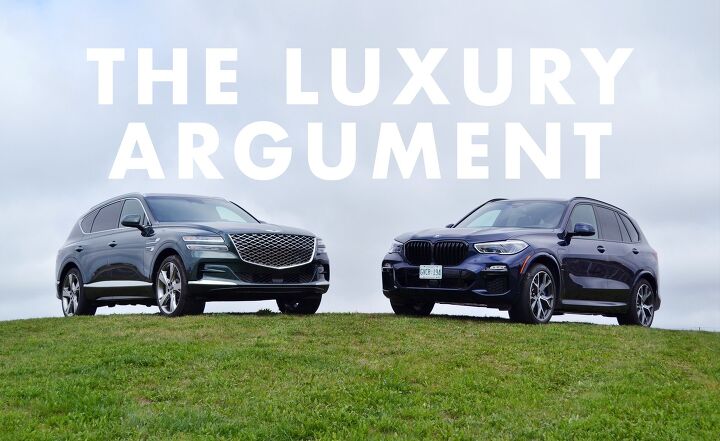

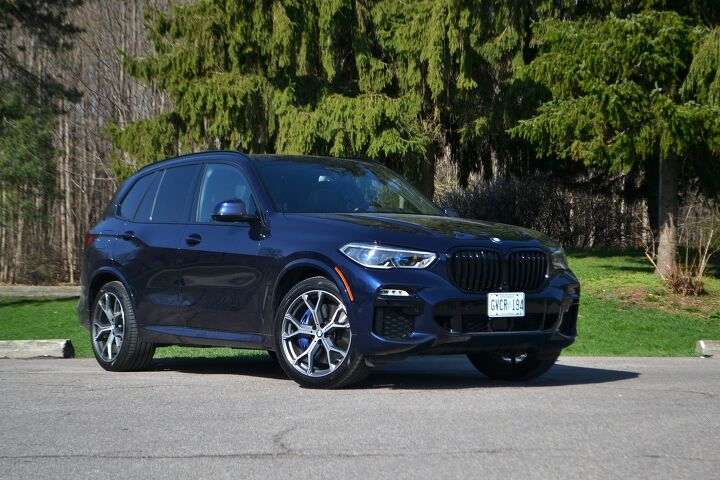

































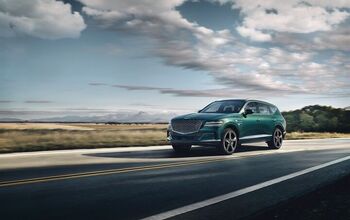



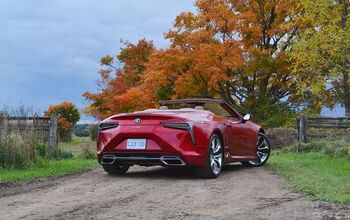




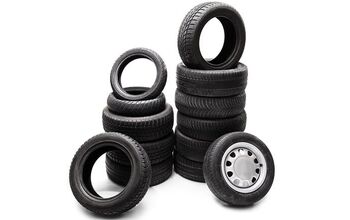





Comments
Join the conversation